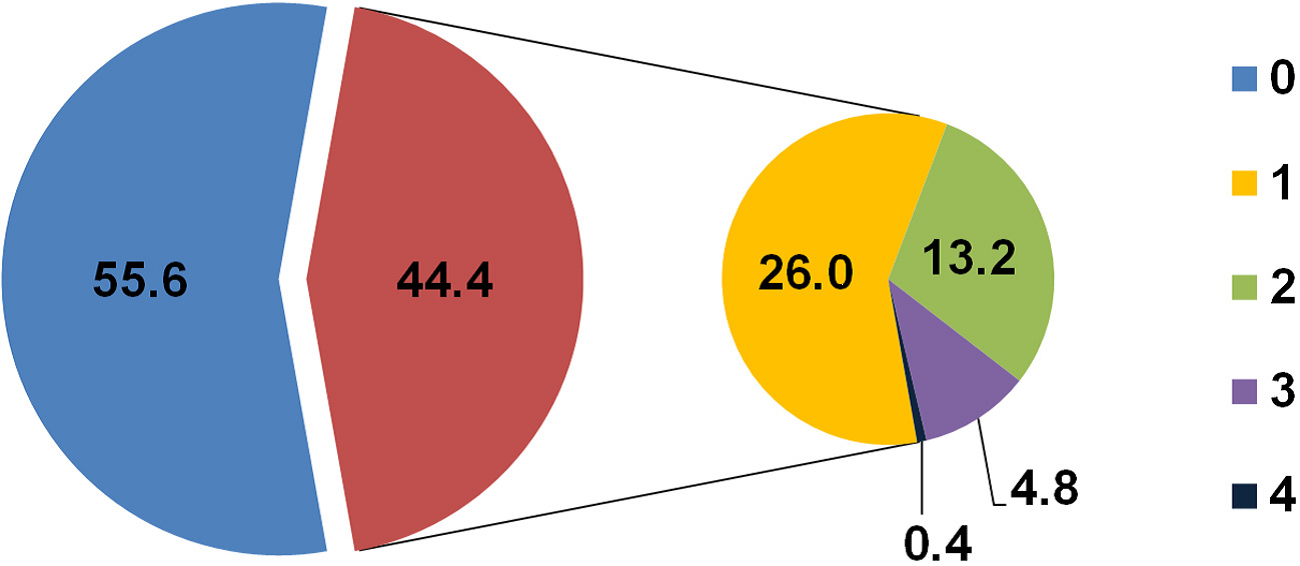FUNGICIDES IN WINE
During winemaking, the fungicide residue found on grapes, depending of the type of fungicide, could be
- partially transferred in must and subsequently in wine (a part stays in solid phase and the other part is transferred in liquid phase), therefore the level of fungicide in wine would be less than the level in grapes
- wholly transferred in the liquid phase, therefore the concentration of fungicide in wine would be equal to the level in grapes (i.e. this is the case for fungicides azoxystrobin, dimethoate, and pyrimethanil)
Alcoholic and malolactic fermentation have no effect on the concentration of fungicide residues. Among clarifying agents, only charcoal appears to be effective in removing pesticide residues (Cabras and Angioni, 2000).
References
Cabras, P., & Angioni, A. (2000). Pesticide residues in grapes, wine, and their processing products. Journal of agricultural and food chemistry, 48(4), 967-973.
CONCENTRATION OF FUNGICIDES DETECTED IN WINES
Esteve-Turrillas et al. (2016) screened 250 wine samples from all over the world (Spain, France, Italy, Argentina, Chile, Germany, Portugal, USA, Australia, South Africa, Austria and other countries for presence of five fungicides and detected at least one of them in 44.4% of the samples, in levels higher than 10 μg/L. The fungicides according to the frequency of detection were pyrimethanil (22.4%), boscalid (19.2%), fenhexamid (18.8%); cyprodinil (6.8%) and azoxystrobin (1.2%).

Occurrence of fungicide residues in wine samples. Blue, negative samples; red, positive samples; yellow, samples with 1 residue; green, samples with 2 residues; purple, samples with 3 residues; black, samples with 4 residues. (Esteve-Turrillas et al. 2016)
References
Esteve-Turrillas, F. A., Agulló, C., Abad-Somovilla, A., Mercader, J. V., & Abad-Fuentes, A. (2016). Fungicide multiresidue monitoring in international wines by immunoassays. Food chemistry, 196, 1279-1286.
FUNGICIDES IN SOUTH AMERICAN WINES
Recent research regarding fungicide residue in 190 red wines from South America showed that 40% of the wines examined contained residue of at least one fungicide in level higher above limit of quantification (LOQ), and 16.3% of the wines contained levels above the maximum residue level (MRL)* for grapes. The fungicides most commonly found were dithiocarbamates, azoxystrobin, carbendazim, difenoconazole, dimethomorph and cyprodinil (Vargas et al. 2018).
* A maximum residue level (MRL) is the highest level of a pesticide residue that is legally tolerated in or on food or feed when pesticides are applied correctly (Good Agricultural Practice).
(https://ec.europa.eu/food/plant/pesticides/max_residue_levels_en)
References
Vargas, T. D. S., Salustriano, N. D. A., Klein, B., Romão, W., Silva, S. R. C. D., Wagner, R., & Scherer, R. (2018). Fungicides in red wines produced in South America. Food Additives & Contaminants: Part A, 35(11), 2135-2144.
FUNGICIDES IN EUROPEAN WINES
A research took place from 2007 to 2010 regarding fungicide residue in German 29 wines from conventionally cultivated grapes (Hacker et al. 2010). Twenty-one different pesticides were detected in total in amounts over 0.01 mg/kg, while up to 13 different pesticides were detected per sample (4.1 on average in each sample), with boscalid being the most frequently detected. Significantly lower residue load was detected in 19 organic wines in the frame of the same research (Hacker et al. 2010).
References
Hacker et al. (2010). http://www.crl-pesticides.eu/library/docs/srm/EPRW10_Cvuas_WinePM035.pdf
LEGISLATION
The European Union has no laws stipulating upper limits of concentrations of pesticides in wine. Guidance is given by the OIV (Organisation Internationale de la Vigne et du Vin).
Read about OIV’s actions regarding MLRs in the wine sector here: http://www.oiv.int/public/medias/3312/maximum-residue-limits-vine-and-wine-sector.pdf
There are laws regarding the limit of pesticide residues in grapes.
EU Regulation 149/2008 for the harmonization of Maximum Residual Limits (MRLs) gives the solution to the problem of agricultural products export in cases where previously there were no European and therefore commonly accepted MRLs. The regulation contains
- European MRLs for each active ingredient / crop combination
- Only one database
- Specific MRL / IT setting process
- European program of official controls in agricultular products
However, there are no limit about the amounts found in wine.
EU legislation on MRLs
https://ec.europa.eu/food/plant/pesticides/max_residue_levels/eu_rules_en
References:
Commission Regulation (EC) No 149/2008 of 29 January 2008 amending Regulation (EC) No 396/2005 of the European Parliament and of the Council by establishing Annexes II, III and IV setting maximum residue levels for products covered by Annex I thereto https://publications.europa.eu/en/publication-detail/-/publication/944dff43-f1fc-4ca9-8a12-3d698bd92b49/language-en
